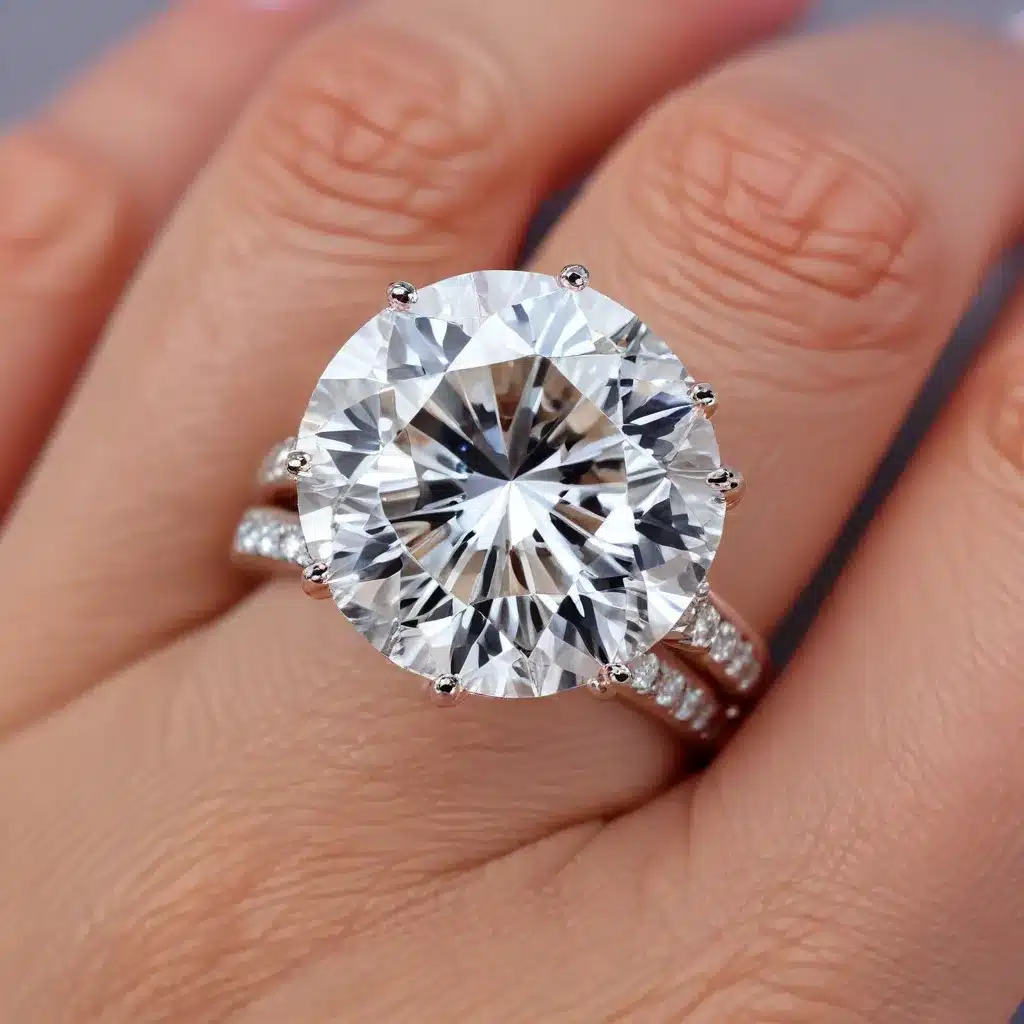
Moissanite is a gemstone that has captivated the hearts of jewelry enthusiasts worldwide. Often referred to as “the Earth’s most brilliant gem,” this stunning alternative to traditional diamonds offers a mesmerizing display of fire and sparkle that rivals even the most coveted diamond. Discovered in a meteorite crater and later recreated in laboratories, moissanite has emerged as a remarkable choice for engagement rings, fine jewelry, and a wide range of decorative applications.
The Nature of Moissanite
Moissanite is a rare, naturally occurring silicon carbide mineral. While it was first discovered in the late 19th century by French chemist Henri Moissan, the vast majority of moissanite used in jewelry today is lab-created. This synthetic process allows for the production of consistent, high-quality moissanite with exceptional optical and physical properties.
Chemical Composition and Structure
At the atomic level, moissanite is composed of silicon and carbon atoms arranged in a crystalline structure. This unique molecular composition gives moissanite its remarkable hardness and durability, second only to diamond on the Mohs hardness scale.
Physical Properties
Moissanite is renowned for its exceptional hardness, scoring 9.5 on the Mohs scale. This makes it highly resistant to scratches, chips, and other forms of damage, ensuring that moissanite jewelry retains its stunning appearance for years to come. Additionally, moissanite boasts impressive thermal conductivity and fire, attributes that contribute to its unparalleled brilliance and scintillation.
Optical Characteristics
One of the key features that sets moissanite apart is its high refractive index of 2.65, which surpasses the 2.42 of diamond. This optical property, combined with its exceptional dispersion (the ability to separate light into its component colors), results in a level of brilliance and fire that is truly captivating. Moissanite’s mesmerizing sparkle and vivid color flashes are unmatched by other gemstones, making it a true standout in the world of fine jewelry.
Comparison to Diamonds
As an alternative to traditional diamonds, moissanite offers a remarkable combination of qualities that set it apart in the gem world.
Brilliance and Sparkle
Moissanite’s higher refractive index and superior dispersion properties allow it to outshine even the most flawless diamonds. The gem’s exceptional light return and scintillation create a level of brilliance that is simply mesmerizing, captivating the eye with its breathtaking sparkle.
Durability and Hardness
While diamonds are renowned for their hardness, moissanite is a close second, scoring 9.5 on the Mohs scale. This exceptional durability makes moissanite an ideal choice for everyday wear, as it is highly resistant to scratches, chips, and other types of damage. Moissanite’s toughness ensures that your jewelry will maintain its stunning appearance for years to come.
Cost and Sustainability
One of the most significant advantages of moissanite is its affordability compared to diamonds. Lab-created moissanite can cost a fraction of the price of a mined diamond of similar size and quality, making it an accessible and budget-friendly option. Additionally, the synthetic nature of moissanite production means that it is an inherently sustainable and eco-friendly choice, free from the ethical concerns associated with traditional diamond mining.
Moissanite’s History and Discovery
The story of moissanite’s discovery and development is as fascinating as the gem itself.
The Story of Henri Moissan
In 1893, French chemist Henri Moissan discovered the first traces of moissanite while examining the mineral composition of a meteorite crater in Arizona. Moissan initially believed he had discovered small diamonds, but further analysis revealed the unique properties of this previously unknown silicon carbide mineral, which would later bear his name.
The Synthetic Moissanite Revolution
While natural moissanite is extremely rare, the development of synthetic moissanite in the late 20th century revolutionized the gem industry. By replicating the natural formation process in a controlled laboratory setting, scientists were able to produce consistent, high-quality moissanite that could be used in jewelry and other applications.
Natural vs. Lab-Grown Moissanite
Today, the vast majority of moissanite used in jewelry is lab-grown, as it offers a more reliable and sustainable supply compared to the limited availability of natural moissanite. Both natural and lab-grown moissanite share the same exceptional properties, making them equally desirable for use in fine jewelry and other decorative contexts.
Applications and Uses of Moissanite
Moissanite’s remarkable qualities have led to its widespread use in a variety of applications, from stunning jewelry pieces to innovative industrial applications.
Jewelry and Engagement Rings
The unparalleled brilliance and durability of moissanite have made it a popular choice for engagement rings, wedding bands, and other fine jewelry. Moissanite’s ability to rival diamonds in terms of fire and sparkle, combined with its cost-effectiveness, has made it a sought-after alternative for couples seeking an ethically-sourced and sustainable option.
Other Decorative and Industrial Uses
Beyond the jewelry industry, moissanite has found a range of other applications, including use in high-end decorative items, abrasives, and specialized electronic components. The gem’s exceptional hardness, thermal properties, and optical characteristics make it a versatile material with diverse applications.
Ethical and Sustainable Considerations
One of the most significant advantages of moissanite is its inherent sustainability and ethical sourcing. Unlike mined diamonds, which can be associated with environmental degradation and human rights concerns, moissanite is produced in a controlled laboratory setting, ensuring a conflict-free and eco-friendly supply chain. This makes moissanite an attractive choice for consumers who prioritize responsible and sustainable purchasing decisions.
As the demand for moissanite continues to grow, this remarkable gemstone is poised to become an increasingly popular alternative to traditional diamonds, captivating the hearts and minds of jewelry enthusiasts and discerning consumers alike. With its unparalleled brilliance, durability, and ethical pedigree, moissanite truly shines as a gem that rivals the diamond in its ability to capture the essence of love and timeless beauty.

